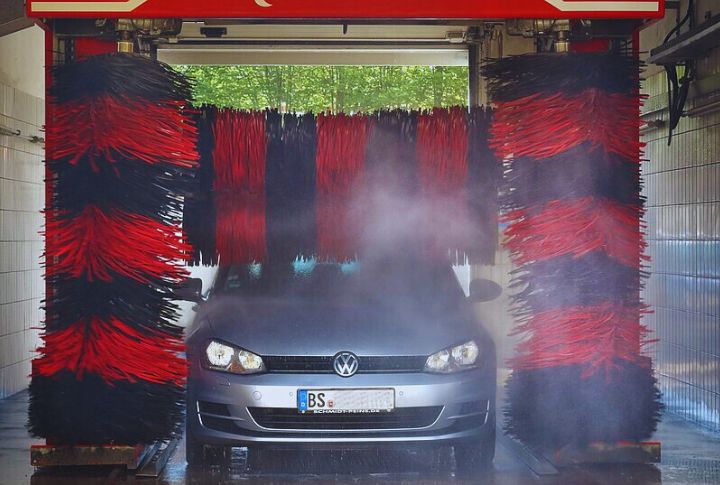
Automatic car washes promise convenience, but they come with a hidden cost. Your car’s shiny finish isn’t always safe under those high-speed brushes and powerful water jets. The damage often starts subtly and gradually worsens, leaving long-term marks you might only notice later. Here’s what you should know about the risks automatic washes bring.
Micro-Scratches From Brush-Based Systems
Those spinning brushes at automatic car washes create tiny scratches on your paint. Each visit adds a few more. You might not spot them at first, but they show up clearly in sunlight. These small marks build up and dull your car’s original shine.
Clear Coat Stripping By High-Pressure Water Jets
High-pressure water jets in automatic car washes may strip away the protective clear coat, particularly if it’s thin or worn. Without this layer, your paint becomes more vulnerable to UV rays and chemical exposure. Repeated washes amplify the risk.
Repetitive Impact Zones From Misaligned Machinery
If automatic car wash machinery is misaligned, it can repeatedly strike the same areas of a vehicle. Over time, this localized contact causes visible wear and uneven paint appearance. Even minor misalignments compound, leaving telltale signs of damage on high-contact zones, such as bumpers and door edges.
Chemical Dulling From Harsh Detergents
Strong soaps at automatic washes strip away protective wax layers. Some facilities use chemicals that wear down your clear coat, and incomplete rinsing leaves residue behind. Your paint loses its depth and vibrancy. What once looked glossy now appears flat and lifeless.
High-Velocity Debris Movement From Drying Blowers

Those powerful drying blowers don’t just move air—they may launch loose debris straight at your paint. Even tiny particles become projectiles that scratch or chip your finish. When equipment isn’t properly maintained, the very system designed to dry your car ends up damaging it instead.
Lower Panel Coating Loss From Undercarriage Sprays
Powerful undercarriage sprays blast away the protective coating on your car’s underbody. Bare metal becomes exposed to salt, rocks, and moisture. Winter road salt makes this worse. Your vehicle’s defenses against rust weaken with each wash instead of getting stronger.
Sandpaper Effect From Embedded Dirt In Brushes
Brushes can trap dirt from previous cars and create a sandpaper effect on fresh paint. This leads to small scratches, often resembling swirl marks. Even with filtered water and frequent cleaning, bristles may hold abrasive particles.
Microfractures From Temperature Extremes In Wash Cycles
Rapid temperature changes during automatic wash cycles stress the paint layers, causing expansion and contraction. Gradually, this may result in small cracks or microfractures, particularly in older or weakened paint. These imperfections slowly reduce paint resilience.
Worsened Damage To Pre-Existing Chips Or Cracks
Automatic washes worsen existing paint chips and cracks through high-pressure water, chemicals, and debris. These elements lift paint further or speed up corrosion in vulnerable areas. Without early repair, repeated washes turn minor blemishes into major cosmetic or structural problems.
Sensor & Trim Malfunction From Water Intrusion
Automatic car washes often use high-pressure water and strong detergents that can seep into gaps around sensors, emblems, and trim pieces. Over time, this intrusion may cause electrical malfunctions in parking sensors or loosen decorative trim. What looks like a simple cosmetic wash can quietly compromise your car’s technology and fittings.

